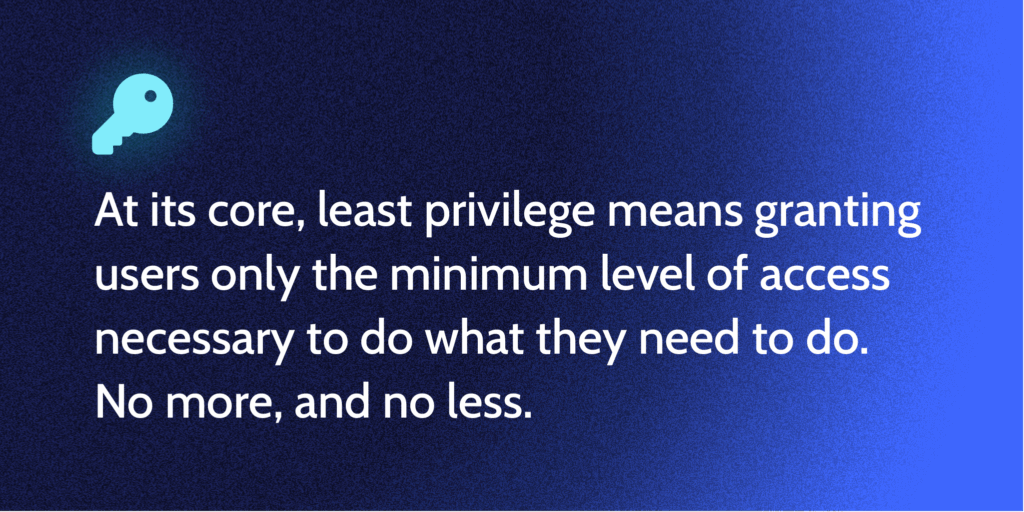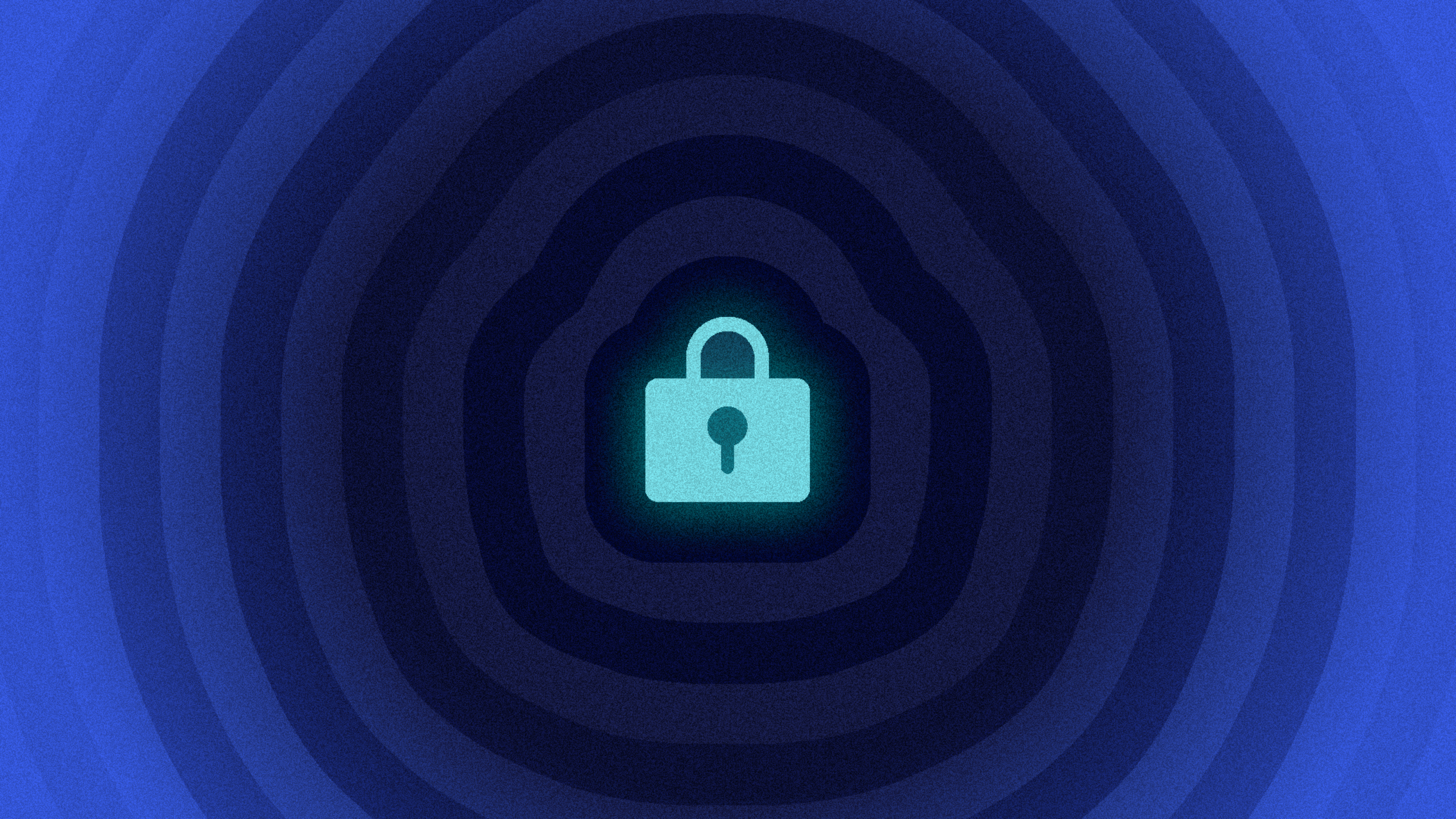The principle of least privilege access comes down to less is more; the less access provided, the more secure. It’s a subset of zero trust security and an important part of a solid access control policy.
Every organization needs to take steps to protect their data and systems from unauthorized access and malicious attacks. The principle of least privilege (PoLP if you prefer; we don’t because it sounds weird) is a cornerstone of modern security practices and frameworks.
At its core, least privilege means granting users only the minimum level of access necessary to do what they need to do. No more, and no less. This straightforward yet powerful idea can dramatically reduce security risks, prevent accidental mishaps, and limit the “blast radius” of an attack or an accident.
When you consider that accidental deletion is the leading cause of SaaS data loss, accounting for some 70% according to Gartner, the benefit of limiting access to just what people need—i.e. following the principle of least privilege access—is clear.
In this post, we’ll explore the principle of least privilege access and the many security benefits it offers. If you haven’t already implemented least privilege best practices, we’ll talk through how to to get started too.
Table of Contents
What is the principle of least privilege access?
Least privilege access is security taking precedence over convenience, as it must. The principle of least privilege access, also known as the access control principle or principle of least authority, is a cybersecurity approach that restricts user permissions to the bare minimum required to work effectively. Instead of granting broad or unrestricted access, each user or user group (in role based access control, RBAC) receives tailored permissions aligned with their specific needs and responsibilities.
For example, should a marketing manager have access to the software development environment? Almost certainly not. By the same token, most software developers don’t need sensitive financial information to be effective and so they shouldn’t have access. By limiting access in this way, organizations reduce the risk of unauthorized activities, data breaches, or accidental changes to critical systems.
In other words, employing least privilege access reduces the chances an organization will find itself on a list of data disasters.
This principle is a fundamental element of zero trust security—a security model that assumes no user or device is inherently trustworthy and requires strict verification for every access request. By implementing least privilege access, companies create multiple layers of defense that protect sensitive assets and reduce the attack surface.

Business benefits of least privilege access
Adopting the principle of least privilege access offers numerous advantages that go beyond just improving security posture. Here are some of the key benefits:
1. Reducing risk from unauthorized access and insider threats
Limiting user privileges to only what is necessary minimizes the chances of unauthorized activities. If an employee’s account is compromised by a malicious actor, the damage is contained to the limited permissions assigned to that account. This containment dramatically reduces the potential impact of cyberattacks, insider threats, and accidents.
2. Preventing the spread of malware
Malware can propagate across networks by exploiting excessive user privileges or vulnerable administrator accounts. By enforcing least privilege access (and of course, preventing users from installing unauthorized applications) organizations can confine malware to its entry point and prevent it from moving laterally to other devices or systems.
3. Protecting sensitive data and systems
Making a clear decision about who and what can access sensitive information and critical systems helps prevent data leaks and accidental deletions or changes. Protecting superuser and administrator privileges further diminishes the attack surface available to hackers attempting sophisticated intrusions.
4. Enhanced accountability and auditing
With fewer permissions granted by default, it becomes easier to track user actions and maintain a clear audit trail. This increased visibility supports forensic investigations, regulatory compliance, and internal policy enforcement.
5. Regulatory compliance
Industry standards and regulations mandate strict control over privileged accounts and access rights. Implementing least privilege access helps organizations meet these requirements by restricting privileged account access and providing detailed logs for compliance verification.
6. Optimizing system performance and management
Granting only necessary access reduces unnecessary complexity in IT environments, making systems easier to manage and improving overall performance.
Best practices for implementing least privilege access
Successfully adopting the principle of least privilege access requires a thoughtful and systematic approach. Here are some best practices to guide your implementation:
- Conduct a comprehensive audit of privileged accounts.
Begin by identifying all privileged accounts across your entire infrastructure, including on-premises systems, cloud environments, DevOps setups, and endpoints. This audit should cover passwords, SSH keys, password hashes, and access keys to ensure no privileged credentials are overlooked. - Differentiate between administrator and standard user accounts.
Clearly distinguish accounts with elevated privileges from regular user accounts. This separation allows you to apply stricter controls and monitoring to administrator accounts while simplifying management of standard users. - Isolate privileged user sessions.
Enhance security by isolating sessions involving privileged accounts. This practice limits exposure and reduces the risk of credential theft or misuse during administrative activities. - Secure privileged credentials in a secure vault.
Store administrator passwords and other sensitive credentials in a secure digital vault. This centralized management helps protect against unauthorized access and simplifies credential rotation. - Implement password rotation policies.
Rotate all administrator passwords immediately after each use to invalidate any captured credentials and reduce the risk of attacks such as pass-the-hash. - Monitor administrator activities continuously.
Set up real-time monitoring and alerting systems to detect suspicious behavior related to privileged accounts. Early detection can prevent or mitigate ongoing cyberattacks. - Use just-in-time access elevation.
Allow users to access privileged accounts or execute privileged commands only temporarily and when necessary. This approach minimizes the window of opportunity for misuse. - Regularly review cloud identity and access management permissions.
Periodically audit permissions across cloud platforms such as AWS, Azure, and Google Cloud Platform (GCP) to remove excessive entitlements and ensure workloads have only the required access.
Expanding your least privilege access strategy
While the steps above provide a solid foundation for implementing least privilege access, organizations should view this principle as an ongoing commitment rather than a one-time project. Cybersecurity threats evolve continuously, and access requirements can change as business needs shift.
To maintain an effective least privilege access environment, consider the following additional practices:
- Automate policy enforcement: Use identity and access management (IAM) tools that automate the enforcement of least privilege policies, reducing human error and improving consistency.
- Educate employees: Train users on the importance of least privilege access and security best practices to foster a culture of security awareness.
- Integrate with zero trust frameworks: Combine least privilege access with other zero trust principles, such as continuous authentication and micro-segmentation, for comprehensive protection.
- Conduct regular access reviews: Schedule periodic reviews of user permissions to remove outdated or unnecessary access rights.
Conclusion and how Rewind supports least access privilege
Zero trust and least access privilege needs to cover every business system to be truly effective, and that includes limiting access to backup data to only those with a legitimate need. Like the 3-2-1 rule for SaaS backups and the Shared Responsibility Model for SaaS data, it’s an important principle for any organization to understand.
Rewind introduced Role-Based Access Control (RBAC) with our Spring 2025 Compliance & Control release. This system allows administrators to assign user roles with access to data and system functions tailored to their responsibilities, making it easy to adhere to the principles of least privilege access.
The principle of least privilege access is a simple yet powerful cybersecurity approach that significantly enhances an organization’s security posture. By granting users only the permissions they need to perform their roles, organizations can reduce the risk of unauthorized access, limit malware spread, protect sensitive data, and improve compliance and accountability.
Implementing least privilege access requires careful planning, continuous monitoring, and regular reviews. Using established best practices such as auditing privileged accounts, isolating sessions, securing credentials, and adopting just-in-time access elevation are all important components of a reliable security framework aligned with modern zero trust principles.
As cyber threats continue to grow in sophistication (and with good ol’ human error being an ever-present risk) embracing the principle of least privilege access is not just a recommended practice—it is essential for safeguarding your organization’s digital assets and maintaining trust in your IT systems.

 Rewind">
Rewind">


